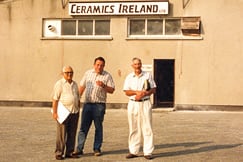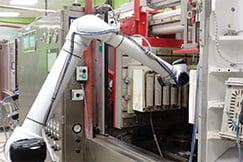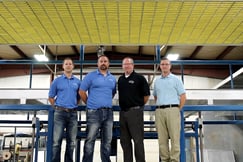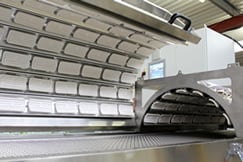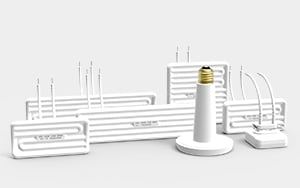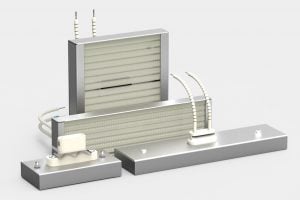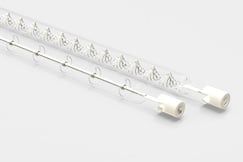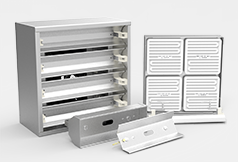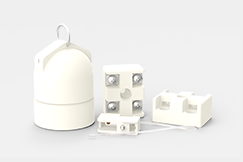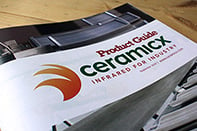| AUTHOR | DATE CREATED | VERSION | DOCUMENT NUMBER |
|---|---|---|---|
| Dr. Gerard McGranaghan | 20 November 2014 | V1.1 | CC11 – 00046 |
Introduction
In this test, two different types of thermocouple were compared to evaluate response to Infrared heating. Both thermocouples were of type K and one was a purely ceramic sheath while the other was of a stainless steel sheath.
Thermocouple Information and Test Layout
The thermocouples were both Type K and manufactured by TC UK, Uxbridge UK. The stainless steel thermocouple was 6mm ø and 210mm long and sheathed in 321 stainless steel. The other thermocouple was 6mm ø and 165mm long but the sheath material was aluminous porcelain.
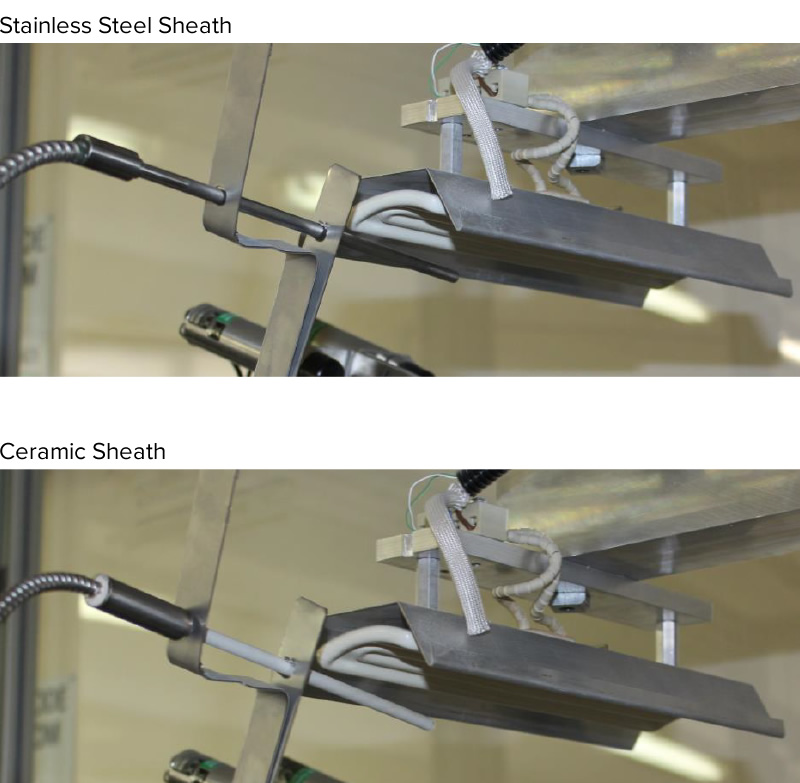
Firstly both of the thermocouples were set up under an FTE 650W element. A bracket was fabricated to hold both elements in the same test position to allow for the 45mm difference in length between stainless steel and porcelain sheaths. Therefore the tips of the thermocouple were located in identical test positions as shown in Figure 1.
Test time was 500seconds.
Results
The results are shown below in figure 2. The reaction of the ceramic sheathed thermocouple was much faster than the stainless steel thermocouple. The ceramic thermocouple reached a temperature of 100°C in approximately 51 seconds. Whereas the stainless steel thermocouple took 242 seconds to reach the same temperature. The ceramic thermocouple also reached a maximum temperature of approximately 196°C in 470 seconds while the highest temperature the stainless steel thermocouple reached was approximately 125°C
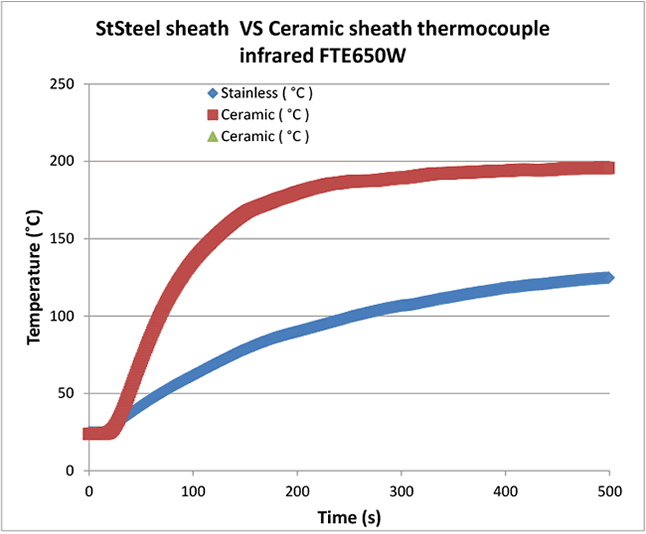
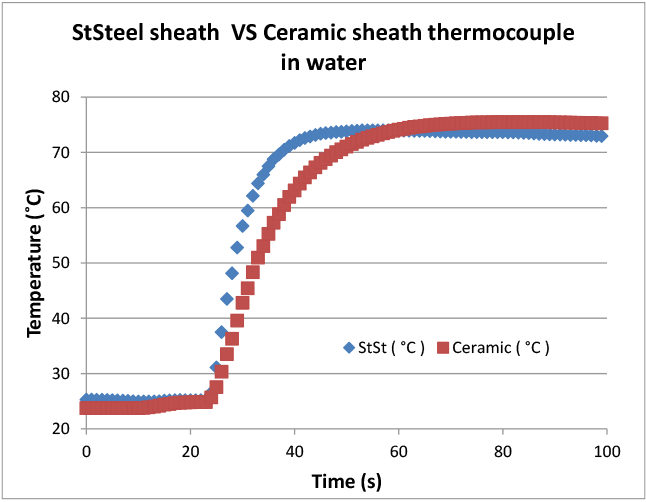
A second experiment was conducted this time using hot water as the heating source. Therefore the method of thermocouple heating was via conduction / convection in both thermocouples as opposed to the previous experiment where the heat transfer was radiative. The results are shown above in figure 3. In this experiment the stainless steel thermocouple heated faster than the ceramic thermocouple. The highest temperature reached by the ceramic thermocouple was approximately 75 °C after 100 seconds.
Conclusions
In radiative heating, the porcelain or ceramic sheathed thermocouple heats faster than the stainless steel thermocouple. This is likely due to the reflectivity of the stainless steel sheath. The porcelain sheath would have a higher emissivity (typically 0.9-0.95) accounting for better absorption of infrared leading to a faster reaction time.
I would be interesting to repeat the same test with a non shiny stainless steel sheath to assess the effect of the higher emissivity of the discoloured sheath on sensitivity.
Conversely, in a conductive/convective test carried out at low temperature (75°C hot water) the stainless steel sheath showed faster heating times. This is most likely due to the higher thermal conductivity of stainless steel (15 W/mK) compared to porcelain (1.5 W/mK).

